The Future of HR Has Arrived: Reskilling and Upskilling
We are a certified Continuing Education provider for
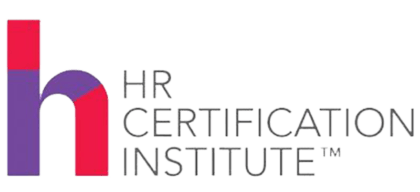
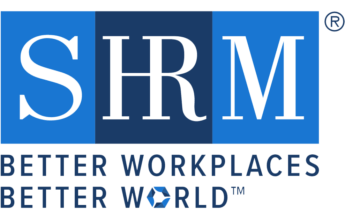

In 2018, the World Economic Forum’s Future of Jobs Report predicted that 75 million jobs would disappear by 2022 across 20 major economies. At the same time, the experts predicted the creation of 133 million new roles, driven by technological advances and continuous digital transformation. However, the pandemic changed everything to the core. The WEF’s Future of Jobs Report published at the end of 2020 reveals a challenging reality regarding job displacements, skills gaps, and new approaches to finding and retaining talent. Reskilling and upskilling are vital to any organization in the new context. Today, we will discuss such matters, offering you a few suggestions on keeping up the pace and striving for talent nurturing and growth in your company.
Why Do Reskilling and Upskilling Matter More than Ever in the New Economic Landscape?
To understand the importance of reskilling and upskilling at the workplace, we need to take a closer look at the 2020 Future of Jobs Report. Here are the major points to consider if you want to up your ante regarding talent workforce acquisition and retention.
1. The Pandemic Pushes Companies to Make Fast Changes
Although the number of jobs destroyed will be surpassed by the number of ‘jobs of tomorrow’ created, in contrast to previous years, job creation is slowing while job destruction accelerates. Based on these figures, we estimate that by 2025, 85 million jobs may be displaced by a shift in the division of labor between humans and machines, while 97 million new roles may emerge that are more adapted to the new division of labor between humans, machines, and algorithms.
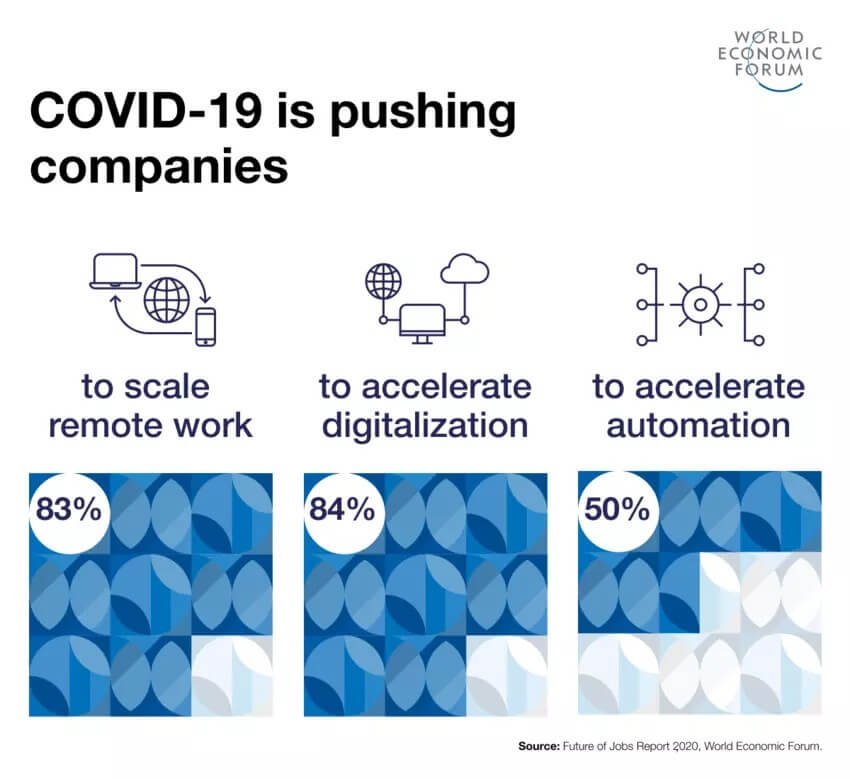
2. The Job Landscape of the Near Future Will Change Drastically
Although the number of jobs destroyed will be surpassed by the number of ‘jobs of tomorrow’ created, in contrast to previous years, job creation is slowing while job destruction accelerates. Employers expect that by 2025, increasingly redundant roles will decline from being 15.4% of the workforce to 9% (6.4% decline) and that emerging professions will grow from 7.8% to 13.5% (5.7% growth) of the total employee base of companies’ respondents. Based on these figures, we estimate that by 2025, 85 million jobs may be displaced by a shift in the division of labor between humans and machines, while 97 million new roles may emerge that are more adapted to the new division of labor between humans, machines, and algorithms.

3. Soft Skills Surpass Hard Skills in Importance
Skills gaps continue to be high as in-demand skills across jobs change in the next five years. The top skills and skill groups that employers see as rising in prominence in the lead up to 2025 include critical thinking and analysis, problem-solving, and skills in self-management such as active learning, resilience, stress tolerance, and flexibility. On average, companies estimate that around 40% of workers will require reskilling of six months or less, and 94% of business leaders report that they expect employees to pick up new skills on the job, a sharp uptake from 65% in 2018.
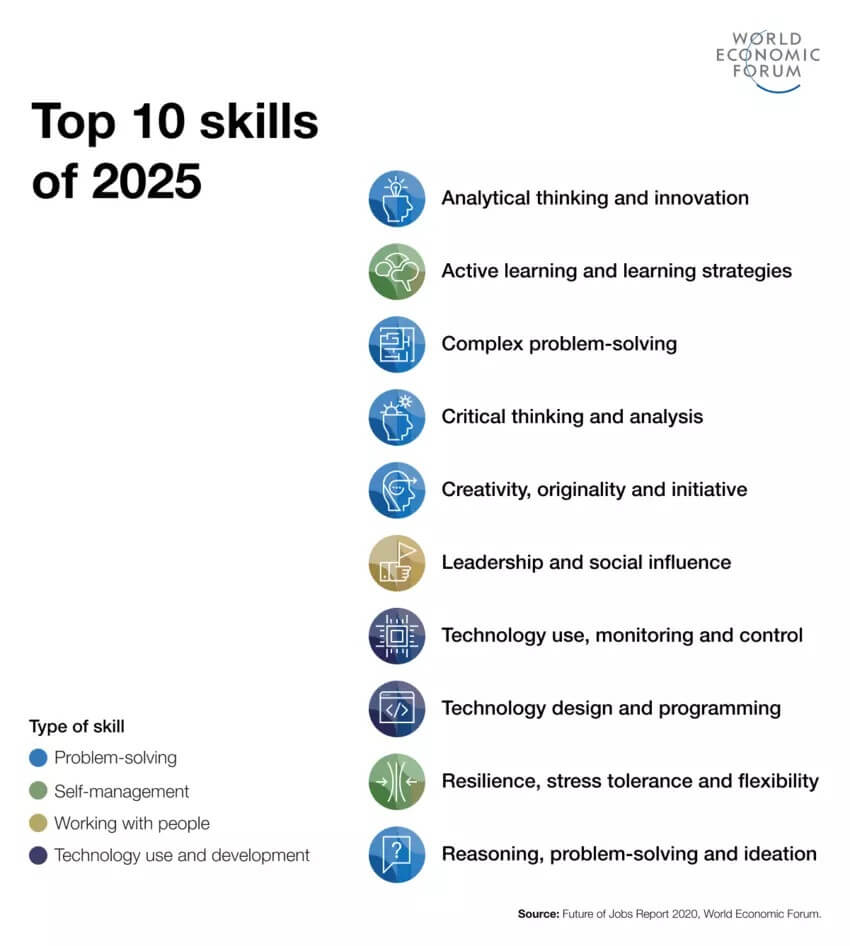
4. Half the Employees Need Reskilling
The window of opportunity to reskill and upskill workers has become shorter in the newly constrained labor market. This applies to workers who are likely to stay in their roles and those who risk losing their roles due to rising recession-related unemployment and can no longer expect to retrain at work. For those workers set to remain in their roles, the share of core skills that will change in the next five years is 40%, and 50% of all employees will need reskilling (up 4%).
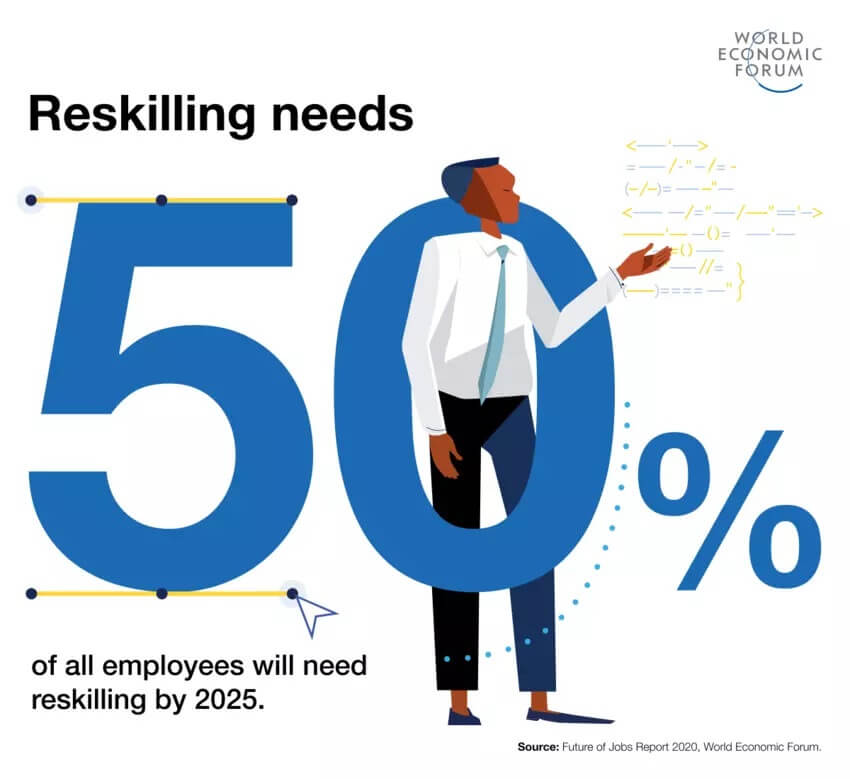
5. Reskilling and Upskilling Have Great Return of Investment Rates
Despite the current economic downturn, most employers recognize the value of the human capital investment. An average of 66% of employers surveyed expect to get a return on investment in upskilling and reskilling within one year. On average, employers expect to offer reskilling and upskilling to just over 70% of their employees by 2025. However, employee engagement in those courses is lagging, with only 42% of employees taking up employer-supported reskilling and upskilling opportunities.
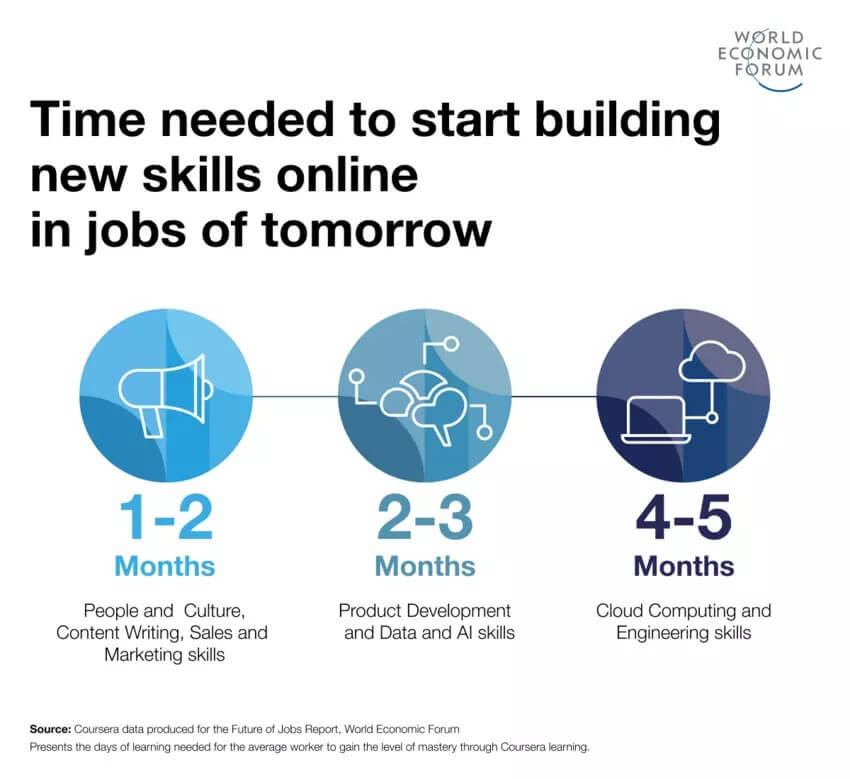
In conclusion, reskilling and upskilling represent the strategic response to the fast-changing skills demand the world faces today. But before we discuss how organizations should embrace reskilling and upskilling, we should understand better what they are.
What Do Reskilling and Upskilling Mean?
The definitions differ by source, but both terms refer to skill learning.
- Reskilling: helping existing employees to learn new skills needed for new job roles within the same organization. For instance, a physical store can reskill its salespeople to work as remote eCommerce sellers or as customer service agents.
- Upskilling: helping existing employees learn more specific, advanced skills. Support them to move forward on their career paths and the company close talent gaps. For example, a retailer can upskill some of its most talented salespeople to become managers. They can do that by offering employees training in data analysis, eCommerce, inventory planning, digital marketing, etc.
Reskilling means preparing employees to take other roles in your company. Upskilling refers to offering continuous education to those ready to move up on the career ladder.
Instead of spending time and money on reskills and upskills, companies prefer to hire new people for their open positions. Nevertheless, it is better to reskill and upskill inside the company instead of relying exclusively on external hiring.
Reskilling and Upskilling vs. External Hiring
Almost all talent acquisition strategies rely on finding employees outside the organization through various means. But, if the World Economic Forum’s predictions are correct, it will become harder and harder for recruiters and companies to hire talented candidates who bring the skills we need to grow.
Most likely, we will discuss the skill gap in a future guide. For now, we will only say this: it represents the difference between what employers want and what candidates can offer. This skills’ mismatch makes it difficult for candidates to find relevant jobs; for employers, it gets harder and harder to hire talented employees showing appropriately trained abilities and competencies.
The root causes underlying the skills gap vary from the extraordinary technological leaps we make every day (robotics, AI, and automation included) to the education system and employers’ flaws. Addressing the skills gap with reskilling and upskilling seems one of the most productive strategies to implement in your organization. Let’s see why and how!
What Are the Benefits of Reskilling and Upskilling?
We know (and hope) recruits come to the table with the skills, behaviors, attitudes, and personality traits you require.
On the other hand, established employees already have a deep understanding of the company’s processes, core values, customers and stakeholders, technologies, etc. In other words, onboarding and training costs next to nothing. Even if your current employees do not have extensive knowledge of the company’s ins and outs, you will still spend less money and time with their training in new or paradigm-shifting processes/technologies.
So let’s see some attainable and measurable benefits of reskilling and upskilling!
1. Better Allocation of Resources
Even with companies using the most advanced customized hiring system to save time, money, and mistakes with new hires, sometimes, the new hires do not work as expected. Chances are low, but given the pace, it is not a good time to assume hiring risks.
When you reskill or upskill current employees, you circumvent the risks of hiring mistakes because you are in a hurry to find someone for your open positions. This strategy allows you to free some of your resources to go about both strategies in parallel. On the one hand, you can invest in attracting, assessing, and onboarding new candidates and, on the other, strategize to reskill or upskill your elite employees.
2. Attracting New Talent
When it comes to recruiting, new talent will always show interest in companies willing to make the effort of training their employees into building new or advanced skills. As long as your company fosters a culture of growth, you will build an attractive employer brand. Reskilling and upskilling is a gift that keeps on giving. You will be able to bring in new candidates interested in continuous learning and professional development.
3. Retaining New Talent
Few talented employees will leave a company invested in their constant development. As the World Economic Forum states in the report,
There has been a four-fold increase in the numbers of individuals seeking out opportunities for learning online through their own initiative, a five-fold increase in employer provision of online learning opportunities to their workers, and a nine-fold enrolment increase for learners accessing online learning through government programs. Those in employment place a larger emphasis on personal development courses, which have seen 88% growth among that population. Those who are unemployed have emphasized learning digital skills such as data analysis, computer science, and information technology.
As you can see, talented employees both initiate constant learning and appreciate companies focused on helping them grow personally and professionally. It is a win-win situation for employers and employees alike.
Who Should Benefit From Reskilling and Upskilling?
Forward-thinking organizations should all pick up the pace to upskill and reskill their employees if they want to keep up with the ever-shifting economic landscape. However, most organizations face a common dilemma: what employees should benefit from such programs? A select few? All of them?
Let’s start with the question of “when companies should initiate reskilling and upskilling programs.” To answer the “when,” your organization needs to understand its employees’ capabilities (hard skills and soft skills alike). Before you design a strategy, you need to have a clear vision of the most skill-demanding areas, the highs, the lows, and the opportunities you need to explore.
As for whom to reskill or upskill, let’s see what specialists have to say:
An agile, flexible workforce is crucial for organizations that want to stay ahead of the curve. Therefore, a culture of upskilling and reskilling is a valuable asset that allows quick adoption of new technological solutions and innovative business practices.
Employees’ personal aspirations are a huge driving force in their productivity, engagement, and loyalty to their organizations. Companies that are smart enough to harness these aspirations and provide their employees with personalized career paths find that the boost to their overall performance is significant. But these personalized career paths can also serve as a compass to reskilling efforts. Looking at skill gaps and matching them up to gaps that need to be bridged to serve employees’ career aspirations helps align organizational and personal goals and identify strong candidates for specific upskilling and reskilling programs.
Adam Etzion – Upskilling, Reskilling and Preparing for the Future. Gloat (2020)
Now that we have a clearer idea about who and when to engage in growth programs, it is time to move on to the next question.
What Are the Crucial Skills to Train in Our Employees?
If we look again at the infographics provided by the World Economic Forum, we see that soft skills take some precedence over hard skills. The latter, however, is crucial to any organization’s growth as well. The major types of skills defining the jobs of 2025 are as follows:
- Problem-solving. Here, experts include analytical thinking, critical thinking, innovation, analysis, creativity, originality, initiative, reasoning, logic, etc.
- Self-management skills emphasize active learning and learning strategies, flexibility/adaptability, resilience, and stress tolerance.
- Working with people is also vital, namely teamwork skills, leadership skills, and social influence.
- Technology is at the forefront, with tech design, programming, technology use, monitoring, and control taking the lead.
It seems we were right all along: transferable skills are the ones that move not only the workforce but the economy itself.
How to Implement Reskilling and Upskilling Programs in Your Organization
As Adam Etzion pointed out, the first step is to evaluate our workforce’s skills to understand the gaps correlated with our business needs. Now, such evaluations are easier than ever.
Use the Candidate Assessment Tests to Evaluate Your Existing Employees
Some of your coworkers need reskilling altogether, while others would benefit best from upskilling programs. Learn all you need to know about their base levels with the same tools you use to assess job candidates. From tests dedicated to evaluating cognitive abilities, reasoning, logic, computer literacy, or problem-solving to personality inventories and leadership profiling, you already have the best instruments at your disposal.
Design a Yearly Growth Plan for Each Employee
Remember that you have to match your reskilling and upskilling efforts with your employees’ aspirations and your company’s real needs. It would be a mistake to round up all your employees and send them to programming lessons just because knowing how to code is a crucial skill to have.
Instead, work with your employees to set yearly growth goals. Your programmers might want new software to become part of their upskilling programs. Your sales representatives might request to reskill in customer service software or eCommerce marketing. Either way, setting clear and measurable goals and KPIs is an infallible strategy.
Invest in Employee Training Programs
Some you will have to buy or pay subscriptions to; others can take the form of mentorship programs run by some of your senior experts. From online courses and certifications to allowing your elite employees to teach the less seasoned ones everything they know, you have many opportunities. Internal coaching and mentoring programs are the beating heart of employee growth programs and talent retaining.
An interesting way to foster a healthy reskilling or upskilling program is job shadowing. It amounts to effective internal mobility, not to mention progressive growth.
Job shadowing means that some employees in one department shadow a team in another department to see how they work. It encourages knowledge building and share, transfer of skills, and potential new career paths for some of your employees. Moreover, an employee ready to upskill might shadow a senior coworker who does the job now to understand what skills they need to work on and where they can grow.
Get Experts to Help You
After doing some things the same way for years, most organizations find it hard to embrace change. Job rotation and shadowing, building multidisciplinary teams, investing in people’s personal growth, train people for remote work, implement new technologies, etc. do not happen overnight. Some companies want to keep up the pace but don’t know how to start.
It is why you have experts to help you. You can hire consultants to help you assess your workforce’s skills and find the skills gaps you need to bridge. Learn from them and embrace hi-tech hiring systems. Train your HR resources, adopt new technologies to find and retain new and established hires, and build coherent employee growth programs.
How Are Your Reskilling and Upskilling Programs Working?
The World Economic Forum’s report is a revelation for whoever wants to see. In our rush to hire top talented candidates and grow our talent pools, we sometimes forget about the talent we have in front of us. Recruiting from the inside is one of the most productive hiring strategies known to organizations. But are we doing it right? The report’s conclusion strengthens what we have always said: reskilling and upskilling in soft and hard skills should become a top priority for both employees and employers.
Now, it is your time to share your point of view. Do you consider upskilling or reskilling as important as the reports deem them to be? Is your organization making a sustained effort in this direction? How do you approach such issues in your company? We’d love to hear your thoughts on this hot topic!
Photo by Mikael Blomkvist from Pexels
Book An Appointment
Schedule a Free Consultation to Turn your Hiring Process into a Top Talent Generating Machine
Talk With Us Now
Identify Top Candidates ASAP
(833) 332-8378
